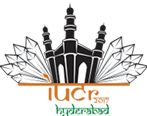-
 golconda fort
golconda fort -
 charminar
charminar -
 qutb shahi tombs
qutb shahi tombs -
 birla mandir
birla mandir -
 software companies
software companies -
 shilparamam crafts village
shilparamam crafts village -
 bistro @ secret lake
bistro @ secret lake -
 falaknuma palace
falaknuma palace -
 taramati baradari
taramati baradari -
 chowmahalla palace
chowmahalla palace -
 osmania hospital
osmania hospital buddha @ hussain sagar lake
buddha @ hussain sagar lake mecca masjid
mecca masjid gol bungalow
gol bungalow paigah tombs
paigah tombsHyderabad, India’s fifth largest metropolis with a population of over nine million, is a city that fortifies the ramparts of history. More than 420 years ago its founder, Sultan Quli Qutb Shah, ruled from the citadel of Golconda, gradually establishing his capital eight kilometres eastwards across the river Musi. Legend has it that the poet-king built a bridge for his trysts with Bhagmati, a Hindu courtesan. The city was named Bhagyanagar after her, and
then renamed Hyderabad when she became Queen Hyder Mahal.Under the Qutb Shahi dynasty, Hyderabad grew into a centre of learning, trade and the arts in the 16th and early 17th centuries. It was one of the world’s greatest markets for diamonds, pearls, silks, steel and armaments. A brief and dismal spell of Mughal rule gave way to the Asaf Jahi line, who reigned spectacularly as the Nizams of Hyderabad from 1724 to 1948. The French and British had entered India by the early 17th century and the Nizams befriended them without acceding power. The British stationed a resident in Hyderabad and imposed a heavy military presence, whose maintenance burdened the state’s coffers. But Hyderabad remained the largest and most prosperous princely state in India, with an area larger than England, Scotland and Wales combined. The State had its own currency, mint, railways, army, airlines, radio broadcasting service and postal system. The last Nizam, Mir Osman Ali Khan, notorious for his miserly ways and the fifth richest man in recorded history, was estimated to be worth US$2 billion in 1937.
When India gained independence in 1947, the Nizam refused to accede to the Indian Union. Faced with the idea of a maverick and possibly hostile state in the heart of their new nation, its leaders annexed Hyderabad by force on 18th September, 1948 and deposed the Nizam. It was an inglorious end to a kingdom where literature, the fine arts, architecture and culture had flourished over time, to bring a rare sophistication to its land and people.
The city today is the capital of the small state of Telangana. It has re-invented itself as a hub for heavy industry, pharmaceuticals and bio-technology. It is also a preferred destination for global IT companies and home to many scientific research organizations and institutions for higher education. Quli Qutb Shah wrote of building a city “unparalleled in the world and a replica of heaven itself”. In a changing world, the city has not let him down.
Hyderabad, December 1948


